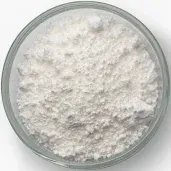
E160 Food Additive - Natural Colors and Benefits
Understanding E160 Food Additives Carotenoids and Their Benefits
Food additives play a vital role in modern food production and preservation, enhancing the visual appeal, flavor, and shelf life of various products. Among these, E160 refers to a group of color additives primarily derived from natural sources. The E160 category encompasses carotenoids, which are pigments found in plants that give them their bright colors, such as yellow, orange, and red. Common examples of carotenoids include beta-carotene, lutein, and lycopene.
The Source of E160 Additives
Carotenoids are found in a range of fruits and vegetables. For instance, beta-carotene is abundant in carrots, sweet potatoes, and pumpkins, while lycopene is prevalent in tomatoes and watermelon. These natural colors not only enhance the aesthetic quality of food products but also carry significant nutritional benefits. Unlike synthetic colorants, which can sometimes be associated with adverse health effects, carotenoids are perceived as a healthier option.
Nutritional Benefits
One of the most notable benefits of carotenoids is their antioxidant properties. Antioxidants are crucial in combating oxidative stress in the body, which can lead to chronic diseases such as cancer and cardiovascular conditions. For example, beta-carotene is a precursor to vitamin A, essential for maintaining healthy vision, immune function, and skin health. The consumption of foods rich in carotenoids has been linked to reduced risks of certain diseases, further emphasizing their value as more than just food coloring agents.
e160 food additive

E160 in Food Products
E160 additives can be found in a wide variety of processed foods, including snacks, beverages, dairy products, and even bakery items. They not only provide color but may also improve the overall nutritional profile of the foods they are used in. For instance, adding beta-carotene to margarine can fortify it with vitamin A, making it a healthier alternative to butter. Consumers are increasingly seeking products that are made with natural ingredients, and the use of E160 additives aligns with this trend, offering both aesthetic and health benefits.
Safety and Regulations
Safety is a paramount concern regarding food additives. E160, being derived from natural sources, is generally regarded as safe (GRAS) by regulatory authorities when consumed in appropriate amounts. However, it's important for manufacturers to adhere to guidelines set forth by food safety organizations. This includes proper labeling, which allows consumers to make informed choices regarding the products they consume.
Conclusion
In summary, E160 food additives, particularly carotenoids, are significant both for their role in enhancing the visual appeal of food and for the nutritional advantages they offer. As consumers become more health-conscious and seek out natural food ingredients, the demand for E160 additives continues to grow. Understanding the benefits and applications of these natural colorants allows for a greater appreciation of how they contribute to our food system, promoting both health and enjoyment in the foods we eat. In a world increasingly driven by convenience and processing, E160 provides a bridge between the natural and the modern, ensuring that food remains not only safe and appealing but also nutritious.
-
Essential Guide to Acetic Acid Food Preservative – Benefits, Uses & VendorsNewsNov.25,2025
-
Comprehensive Guide to Acetic Acid as Preservative: Benefits, Uses & Future TrendsNewsNov.24,2025
-
What Is a Food Additive? Global Insights, Applications & Future TrendsNewsNov.24,2025
-
968 Sweetener: The Modern Solution for Health-Conscious SweeteningNewsNov.23,2025
-
Discover the Benefits and Uses of 965 Sweetener (Erythritol) | Tenger ChemicalNewsNov.23,2025
-
961 Sweetener - A Next-Gen Sugar Alternative for Health and IndustryNewsNov.23,2025
-
Understanding 960 Sweetener: The Modern Sugar Alternative for Health and IndustryNewsNov.22,2025
Hebei Tenger Chemical Technology Co., Ltd. focuses on the chemical industry and is committed to the export service of chemical raw materials.
-

view more DiethanolisopropanolamineIn the ever-growing field of chemical solutions, diethanolisopropanolamine (DEIPA) stands out as a versatile and important compound. Due to its unique chemical structure and properties, DEIPA is of interest to various industries including construction, personal care, and agriculture. -

view more TriisopropanolamineTriisopropanolamine (TIPA) alkanol amine substance, is a kind of alcohol amine compound with amino and alcohol hydroxyl, and because of its molecules contains both amino and hydroxyl. -

view more Tetramethyl Thiuram DisulfideTetramethyl thiuram disulfide, also known as TMTD, is a white to light-yellow powder with a distinct sulfur-like odor. It is soluble in organic solvents such as benzene, acetone, and ethyl acetate, making it highly versatile for use in different formulations. TMTD is known for its excellent vulcanization acceleration properties, which makes it a key ingredient in the production of rubber products. Additionally, it acts as an effective fungicide and bactericide, making it valuable in agricultural applications. Its high purity and stability ensure consistent performance, making it a preferred choice for manufacturers across various industries.





